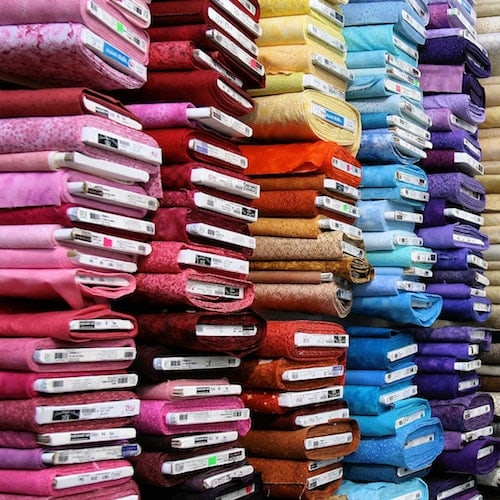Giulia Mensitieri’s book “Le plus beau métier du monde” Dans les coulisses de l’industrie de la mode examines labor in the cultural and creative industries. Analyzing fashion as a system, Mensitieri focuses on the workers involved in immaterial labor. Since 1960, fashion has undergone deep transformations, evolving towards a globalized system. At the heart of the book is the contrast between the fashion world as an enchanted world, made of dreams, imagination, and images, combining beauty, luxury, splendor, creativity, excess, power, and money; and on the other side, the materiality of the system: work and workers working almost for free, precarity, and exploitation. To bring these two aspects together, Mensitieri uses Foucault’s concept of heterotopia. Heterotopias are places outside of the ordinary, even though they are locatable. They may take the form of imaginary places and parallel worlds, yet really exist somewhere. Mensitieri argues that if fashion exists as a dream, this dream is a heterotopia, deploying itself in the places where it is produced and staged.
The fashion world, pushing for consumption by creating desire, coexists with various forms of precarity, exploitation, domination, and quests for power.
It has all the characteristics of capitalism. As a result, it constitutes a privileged field for studying capitalism, functioning like a magnifying glass to explore global dynamics and associated imaginary dimensions, as well as subjectivity and subjection. Heterotopias function as a contrasting definition of the norm, normalizing exceptions. Mensitieri studies this professional sector where free labor has become institutionalized, where precarious work is generalized, and where payment for services is symbolic instead of economic, the result of a process of demonetization of labor.
Mensitieri deconstructs these fantasies by going behind the scenes, observing how reality becomes dream and examining work conditions in this context. She describes many situations where these images are produced and performed, going from photo shoots to fashion shows, following stylist Mia, her exclusive industry insider, or immersing herself in a fashion designer’s studio through an internship.
 The book is structured in three parts, the first analyzing the fashion system and its connection to capitalism. Mensitieri studies the economic and political roles of fashion’s imaginary dimensions and their relation to globalization, considering their global circulation and production delocalization. She shows how models’ bodies are used as working tools to produce images and are transformed into aesthetic bodies, primed and optimized under the lights. This transformation is performed by stylists, photographers, and other fashion workers, who create looks destined for magazines. Stylists produce stories and articles, taking part in the production of the fashion fantasy world. These fantasies are then diffused through magazines, which have a dual role as a commercial and cultural product. They interweave consumption and production, defining, by combining publicity and editorial, what is fashionable and what fashion is. Fashion is legitimized and built as a social world through magazines. This process has a twofold function: on the one hand, it renders this world familiar and an object of desire for consumers; on the other, it produces and stabilizes the “world of fashion” in which workers can identify.
The book is structured in three parts, the first analyzing the fashion system and its connection to capitalism. Mensitieri studies the economic and political roles of fashion’s imaginary dimensions and their relation to globalization, considering their global circulation and production delocalization. She shows how models’ bodies are used as working tools to produce images and are transformed into aesthetic bodies, primed and optimized under the lights. This transformation is performed by stylists, photographers, and other fashion workers, who create looks destined for magazines. Stylists produce stories and articles, taking part in the production of the fashion fantasy world. These fantasies are then diffused through magazines, which have a dual role as a commercial and cultural product. They interweave consumption and production, defining, by combining publicity and editorial, what is fashionable and what fashion is. Fashion is legitimized and built as a social world through magazines. This process has a twofold function: on the one hand, it renders this world familiar and an object of desire for consumers; on the other, it produces and stabilizes the “world of fashion” in which workers can identify.
This part also focuses on haute couture production. Each piece of haute couture is unique, made entirely by hand, requiring hundreds or even thousands of hours of work, as well as precise and varied skills and know-how. This production is provided by skilled workers who manufacture luxury goods while keeping their place as workers in the social strata. The industry is governed by a high social division. For example, dressmakers are not allowed to witness the final presentation of their work on models, nor at fashion shows. And while manual work is the very foundation of haute couture, those who produce it and have the skills to make the designer’s vision a reality do not fit into the social world of fashion. The example of haute couture is proof that those who produce material glamor are at the same time excluded from it. They do not participate in the social and symbolic construction of fashion.
In terms of production, haute couture entails exorbitant costs. As a sector, it never covers its expenses, despite the dresses’ prohibitive prices. From a strictly economic point of view, the industry produces entirely at a loss. Yet haute couture shapes brand image, creating profit with the derivatives and accessories of the commercial lines. Images of haute couture dresses circulate in the press and on television, engendering desire in those who are not able to afford them. Eager to identify with this world, these consumers buy products that are within their reach (lipsticks, glasses or perfumes of the brand) and thus produce the major turnover of the fashion industry.
Fashion is also a globalized industry, producing goods and fantasy circulating on a global scale, driven by mobile and cosmopolitan workers. Therefore, as Mensitieri shows, a study on fashion is by necessity an anthropology of globalization. Methodologically, she studies globalization through ethnography, considering it a component of locally-observable practices and situations (Agier, 2013), and focuses on situations where participants have to deal with issues related to globalization. Since the 1970s, many clothing companies have relocated their production to China as well as to other Asian countries. As early as the 1990s, brands producing luxury goods followed the trend, no longer able to offset the costs of local labor force. Access to globalization is differentiated according to social class and status. In this context, Mensitieri uses the category of the “cosmopolitan elite” (Friedman, 1999 and 2002), which applies to most fashion workers, according to their mobility and their identification with a transnational dimension. She underlines how two different forms of elite have been produced by globalization and are linked through the fashion world: a cosmopolitan elite, who are mostly fashion workers, and an economic and financial elite, embodied by haute couture clients. Fashion workers produce highly valued symbolic capital and build the dream of capitalism, practicing desired professions, even though they live in a condition of economic precarity. As shown in the example of stylist Mia, she participates temporarily in situations of luxury, wealth, and power, identifying herself as a “star”. Yet her discourse is ambivalent and full of elements that contrast with this identity, such as anxiety, solitude, disorientation, and condition uncertainty. These feelings constitute the price to pay to be part of the cosmopolitan elite.
The second part examines the assignment logics of the economic and symbolic values that govern this world. In this context, it means that the more some work is considered prestigious, the more poorly it is paid. This section also considers the diversity of fashion professions and the precarity of its workers. As Menisitieri shows, fashion is a sprawling system that produces a highly heterogeneous professional environment. She gives insight into these forms of precarious work from sales people, models, and designers.
To introduce this second part, Mensitieri uses the metaphor of overexposure. This metaphor points out the attractiveness of the dream engendered by its constant illumination, but also its opacity, in other words the impossibility of perceiving the realities underlying this fantasy, made invisible by the extreme visibility.
Fashion is a system that is simultaneously overexposed and opaque. Overexposed by its omnipresence in the media, driving desires and consumptions, and opaque because it is very difficult to see what is happening behind the produced representations.
In fashion, everything happens as if excessive exposure made the realities and internal rules of production impenetrable, obscure, unknown, and sometimes deliberately hidden. This overexposure produces and maintains desire by mediating only the dimension of dream and prestige, keeping the conditions of production invisible or opaque.
Exploring various work situations in fashion, Mensitieri takes the case of modeling as an example to reveal the rules of the fashion game, namely that the most symbolically rewarding and career-making work is the least well paid, while the well-paid work is penalizing for the career. Fashion is governed in all spheres of its production by a symbolic hierarchy which places work considered artistic, creative, and independent at the top of the prestige scale, while work defined as commercial is at the bottom. In line with Mears (2011), Mensitieri argues that this binary separation between “commercial circuits” and “artistic circuits” (Zelizer, 2013) is fundamental to fashion economies. Although fashion is an industry dedicated to profit, its valuation process depreciates the economically lucrative benefits. While the artistic circuit is the most valued in terms of prestige, it is also the one in which financial remuneration is the exception, not the norm. Conversely, the commercial circuit is very well paid but does not offer any gain in symbolic capital. Nevertheless, the ultimate goal is for agencies as well as fashion models or workers to hit the “jackpot” (Mears, 2011). Those who aspire to this must build their career by juggling between accumulating symbolic capital, essential to evolve in the profession and build a reputation, and earning economic capital, necessary for survival. Therefore, they need to accumulate prestige through free work, while in the short term ensuring their material survival through commercial services.
Wages are not the only form of compensation in the professional fashion sector: visibility is another form of social consecration.
In fashion, visibility is frequently obtained in exchange for free work and involves structural uncertainty and precarity.
It is a symbolic capital potentially convertible into money. Contextualizing fashion work with work in the post-Fordist era, Mensitieri shows the logic of demonetization of labor in these professional sectors, raised as reference models by capitalism. This includes low wages, flexible working hours, precarity and uncertainty, the importance of networking and social capital, isolation, and a strong tendency towards self-exploitation (Hesmondhalgh and Baker, 2010). This dynamic of free labor is central to the production of today’s capitalism. In this context, the notion of the “jackpot” is typical of the neoliberal political project and emblematic of the incorporation of uncertainty and normalization of a lottery-style dynamic. The industry’s structural inequality is not seen by workers in terms of injustice or exploitation, but in terms of chance and risk, notions that depoliticize inequalities and bring them to an individual and personal level.

Another form of recompense in the fashion industry are “perks” (Mears, 2011): non-monetary transactions. Socially and culturally valued objects in the fashion world, like shoes and clothing, become a currency of transaction in the field — elements of distinction and belonging — and indicators of a certain way of life. These objects are also used to place the workers where they belong only temporary, namely in the dream. Objects are the means by which to symbolically access other social geographies and amplify and obscure the gap between economic status and social representation. As for precarity, defined here as economic vulnerability, professional instability, and lack of horizon, it takes the form of an in-between state. Fashion workers are constantly and structurally straddling two levels of existence: the commercial circuit and the editorial circuit; the accumulation of economic capital and that of symbolic capital; the world of luxury and that of precarity; the symbolic status of elites and the material one of precarious workers.
Finally, Menisitieri questions the forms of subjection and subjectification in fashion worlds by considering the role of emotions in professional hierarchies, the obligation to be and appear compliant to a professional role and the workers’ strategies to address inequalities and various forms of domination. Mensitieri analyses the “subject” not as a fixed entity, but as a process, something that is always being done or undone, the product of interactions, power, and contexts. As she argues, today’s capitalist productivity no longer relies on the exploitation of physical labor force but on the workers lives, their emotions, relationships, creativity, sensitivity, and ability to manage themselves. Fashion work implies specific subjectification modalities or, in other words, specific constructions of subjectivities induced by power structures, which are then assimilated by the individuals and performed by them in various situations. Workers are not forced to be there, but they are forced to “be” in a very specific way.
Following Sherman (2007), Mensitieri here specifies the perspective adopted in her work: to understand from within the motivations, desires, expectations, and constraints of workers, while placing these situations and discourses within the framework of contemporary capitalism, of its structural inequalities and power structures. She then presents examples of questions of power, exploitation, free labor, and situations of humiliation or violence via an internship at a designer’s studio, preparing for the Paris fashion week. This enables her to highlight the role of affects and emotions in the production and preservation of hierarchies in fashion world. She argues that the power of subjectification through emotions individualizes the effects of domination, and thereby depoliticizes them. Through various examples, Mensitieri also shows that fashion work produces a specific kind of personality that workers have to perform in order to not be excluded. The obligation to be “cool” forces them to appear in a good mood, smiling, motivated, enthusiastic, and creative, even when overwork, stress, authoritarian or tyrannical behavior, and financial worries and precariousness should cause a different attitude. It is a new form of social control and implies a specific power structuring demonstrated by the tyranny of some and coolness of others. Coolness is also a form of submission to structural hierarchy.
Lastly, Mensitieri argues that passion is a major reason to stay in and endure the fashion industry. Interviews show that passion for work is always connected to sacrifice and suffering.
Precarity, exploitation, and domination are accepted and normalized as the price to pay for a desired, passionate, and fulfilling work.
The subjectification processes described here are therefore the signs of a major anthropological transformation, which no longer sees work as the source of economic capital but as giving meaning to life. These transformations are beneficial for capitalism, which can put to work and make profit out of the workers without having to pay wages.
Mensitieri’s work is a major contribution to the anthropology of work and capitalism. For fashion is only partly an exception connected to creativity, desire, beauty, and luxury. As described in this book, this industry is also emblematic of a work organization specific to contemporary capitalism. As Mensitieri argues in her conclusion, if the neoliberal project is to succeed, creative work has to become the norm, and the social world would take the form of an archipelago of exceptions inhabited by heterotopic subjects, renouncing labor law and social protection in the name of self-expression and self-fulfillment. Deconstructing the dream of fashion makes it possible to understand how this sector is representative of current forms of work, and probably prophetic, in its excesses, of those to come. It is therefore an important work to read now, as important as it is to reinvent solidarity, new forms of collective mobilizations, and a common political project, in a world where individuality has been powerfully valued.
Works cited
Agier, M. 2013. “Le tournant contemporain de l’anthropologie” Socio, n° 1 (mars)
Friedmann, J. 2002. “From Roots to Routes Tropes for Trippers”, Anthropological Theory, vol. 2, n° 1 (mars)
Friedmann, J. 1999. “Indigenous Struggles and The Discreet Charm of the Bourgeoisie” The Australian Journal of Anthropology, vol. 10, n° 1
Hesmondhalgh, D. and S. Baker, 2010. “A very complicated version of freedom. Conditions and Experiences of Creative Labour in Three Cultural Industries”, Poetics, vol. 38, n° 1 (february)
Mears, A. 2011. Pricing Beauty. The Making of a Fashion Model. Berkeley: University of California Press
Sherman, R. 2007. Class Acts. Service and Inequality in Luxury Hotels. Berkeley: University of California Press
Zelizer, V. 2013. Economic Lives. How Culture Shapes the Economy” Princeton: Princeton University Press
Mensitieri, Giulia. 2018. “Le plus beau métier du monde” : Dans les coulisses de l’industrie de la mode. Paris: Editions La Découverte. 350 pp. Pb: 22 €. ISBN : 9782707195401.
Featured image by Jorge Franganillo (flickr, CC BY 2.0).



